6 flowers that are most at risk from a heatwave – and how to keep them happily blooming even when temperatures soar
Extreme heat can cause flower buds to wither, slow, or shut down chlorophyll production

The heat of summer makes us want to down tools and kick back. However, when a heatwave is in full swing, lazing about in deck chairs is no longer possible, and just like us, many flowers find the heat a little too much.
Whilst many sun-worshipping flowers can take the heat (my bearded irises and zinnias are thrilled with the current circumstances), the intense heat is not welcome by all flowers in the garden. Heat can cause flowers to shut down and rob plants of all their energy – a death sentence for many of our favorite and most beautiful flowers.
This is when it is salient to start protecting your plants in a heatwave, and ensuring you have all the tools in your arsenal to safeguard your beloved blooms even in the most extreme heat. Here, we look at six flowers at risk in a heatwave and will need more care and attention during this time, as well as shining a light on how to care for them to keep them flourishing and blooming, even as temperatures rocket.
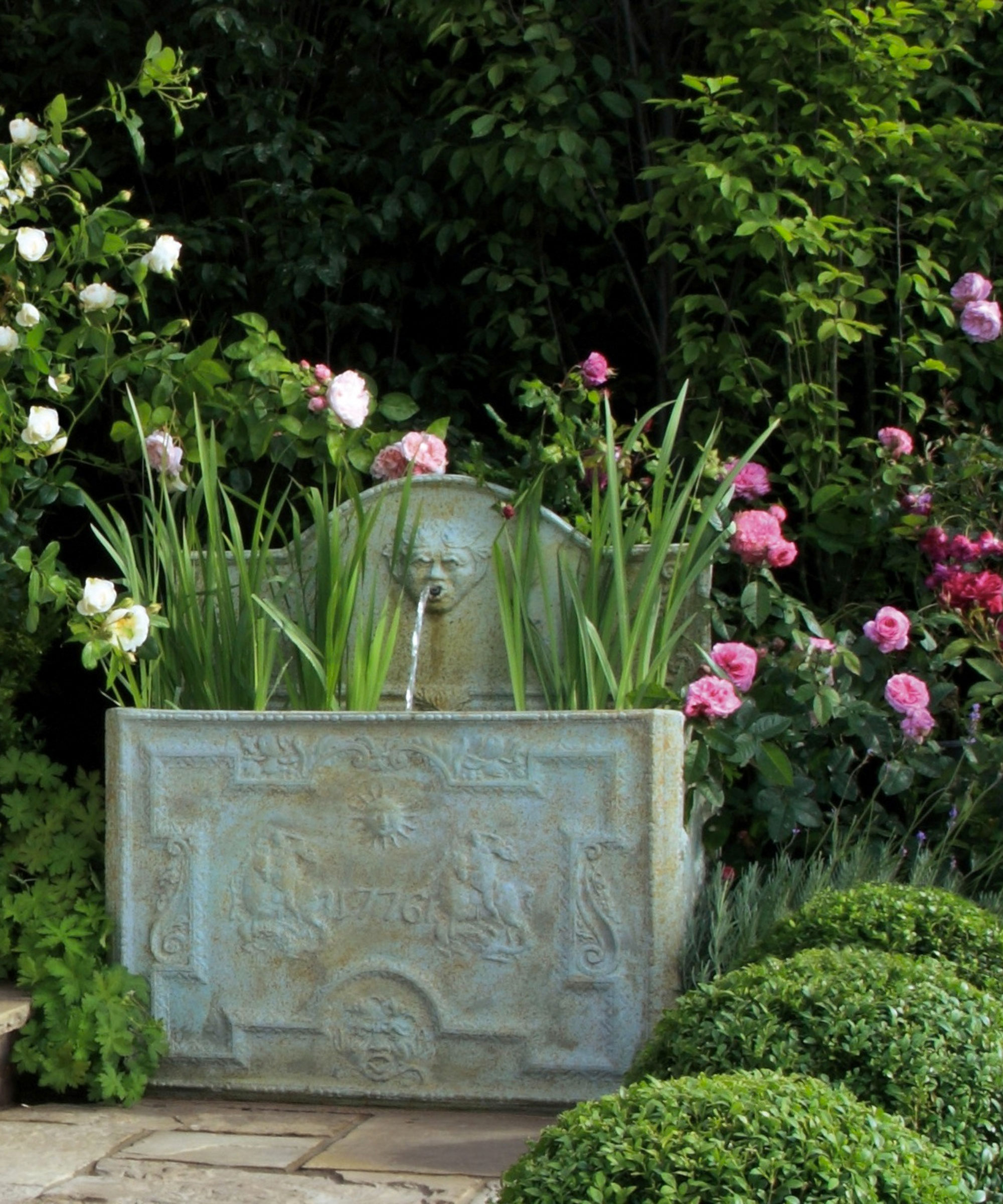
6 flowers that need more attention in a heatwave
1. Ferns

Ferns are some of the very best shade plants that thrive in shelter and dappled shade. This is why I recommend them when homeowners are on the hunt for north-facing garden ideas.
Most ferns thrive in temperatures between 60°F and 75°F (16°C to 24°C). When temperatures soar above 85°F (29°C), ferns begin to experience stress.
If you notice that your fern is drooping, the leaves are curling, or the leaves are brown and crispy, these are all signs that your fern is overheating.
So, what can be done? If you have ferns in containers, the first thing to do is move the containers into the shade and out of direct sunlight. It is paramount that ferns in containers are watered much more regularly in a heatwave. Since containers need more watering than flower beds, and ferns are very thirsty plants, watering regularly is key.
Design expertise in your inbox – from inspiring decorating ideas and beautiful celebrity homes to practical gardening advice and shopping round-ups.
If your fern is planted in a flower bed, you can help alleviate some of the stress on your plant by increasing the humidity. Ferns love humid conditions, as befits their native origins, and you can increase humidity by misting the fern regularly.
2. Hydrangeas
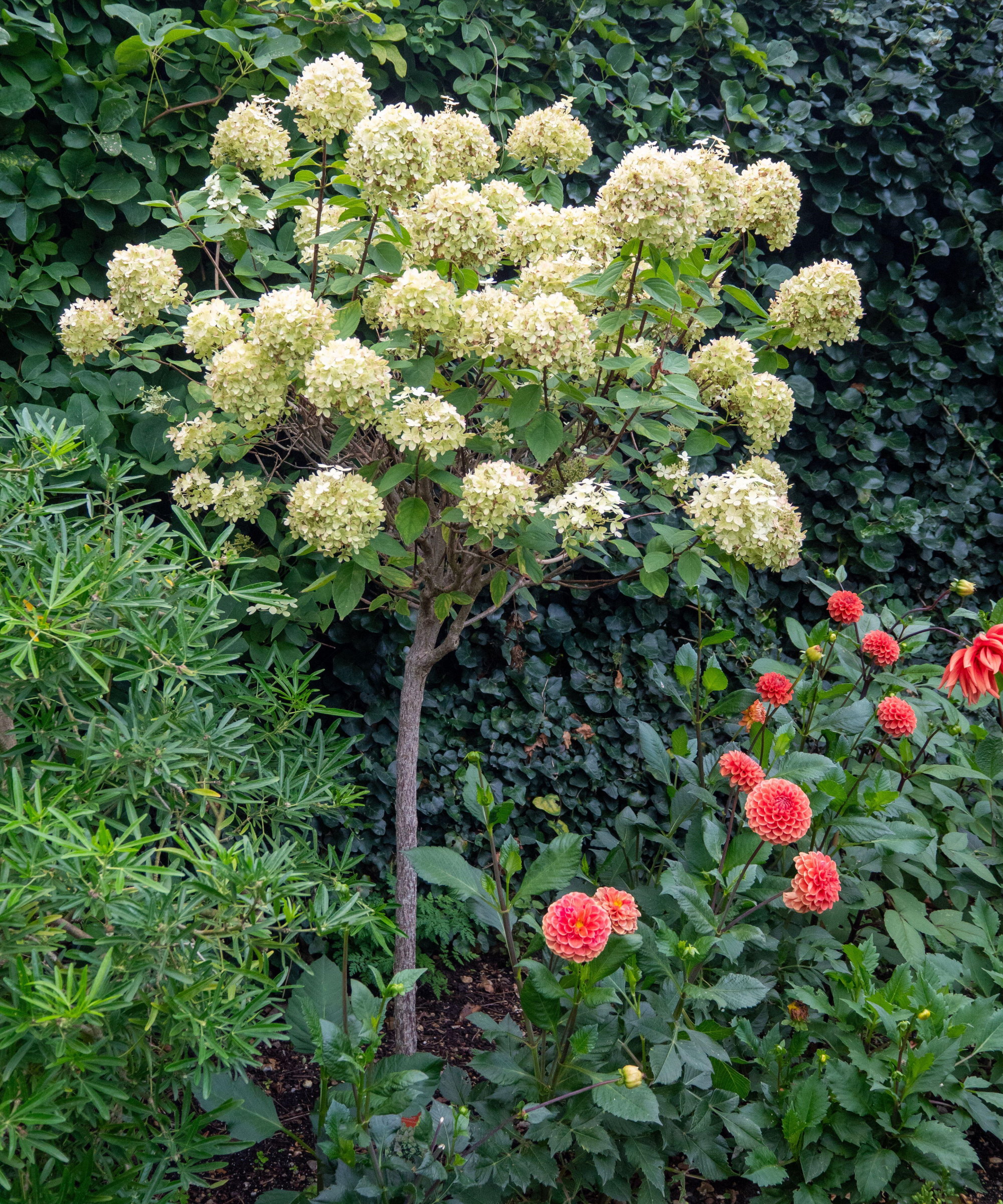
The clue lies in their name; hydrangeas are notoriously big drinkers and always need to be hydrated. What's more, they aren't huge fans of excessive heat. Out of all flowers at risk in a heat wave, hydrangeas are in particular jeopardy. Lack of rain, which often accompanies summer heat spells, only compounds the trouble.
Plants cool themselves down by pulling water from their roots, which then moves through their stems and out through their leaves. It's them breaking a sweat, so to speak. In heat waves, this happens very fast. For hydrangeas, anything above 100°F (38°C) is going to land them in a sticky situation.
Keeping hydrangea roots wet at all times means you are giving your hydrangea the tools it needs to regulate its temperature.
'Hydrangeas have shallow roots and large, moisture-loving leaves. They wilt quickly under intense sun and heat,' explains gardening coach Robin Phelps. 'It is best to water hydrangeas thoroughly in the early morning between 6–9 a.m. This gives the hydrangea plant time to absorb all of the moisture before peak heat and reduces evaporation loss.'
'As well as watering deeply in the morning, you can also mulch heavily around the base to retain moisture. Provide afternoon shade if possible (a shade cloth or patio umbrella works in a pinch).'

Robin Phelps is a Gardening and Preserving Coach, with a passion for nurturing green spaces and preserving the bounties of nature. With over 20 years of experience in gardening, Robin began her journey in a small apartment with a balcony and has since expanded to growing on 3 acres. She has evolved into an expert gardener and is eager to guide others on their gardening journey.
3. Roses

I have a penchant for roses and spend most of my time in the garden fretting about keeping my roses, which are currently at their most exuberant and their colors at their most saturated, happy, and healthy.
Because roses are the star players in my garden, I can't afford to let them suffer, and whilst they love plenty of sunshine, when the temperatures rocket to high 90s to 100s (32-37°C) and up, roses will start flagging, and in the worst case scenario, they can perish and die.
Keep an eye out for wilting and leaf scorch, or burned or faded blooms. Ideally, though, you should intervene before this happens to safeguard the blooms and prevent damage.
It goes without saying that roses must be kept well watered, but it is just as important to provide heat relief. If you live in states like Florida or Arizona, it is far hotter for longer, so roses don't get any break. This is why it is so important to incorporate some garden shade ideas, for example, erecting a temporary canopy, to provide some much-needed relief for your beloved roses.
4. Astilbe
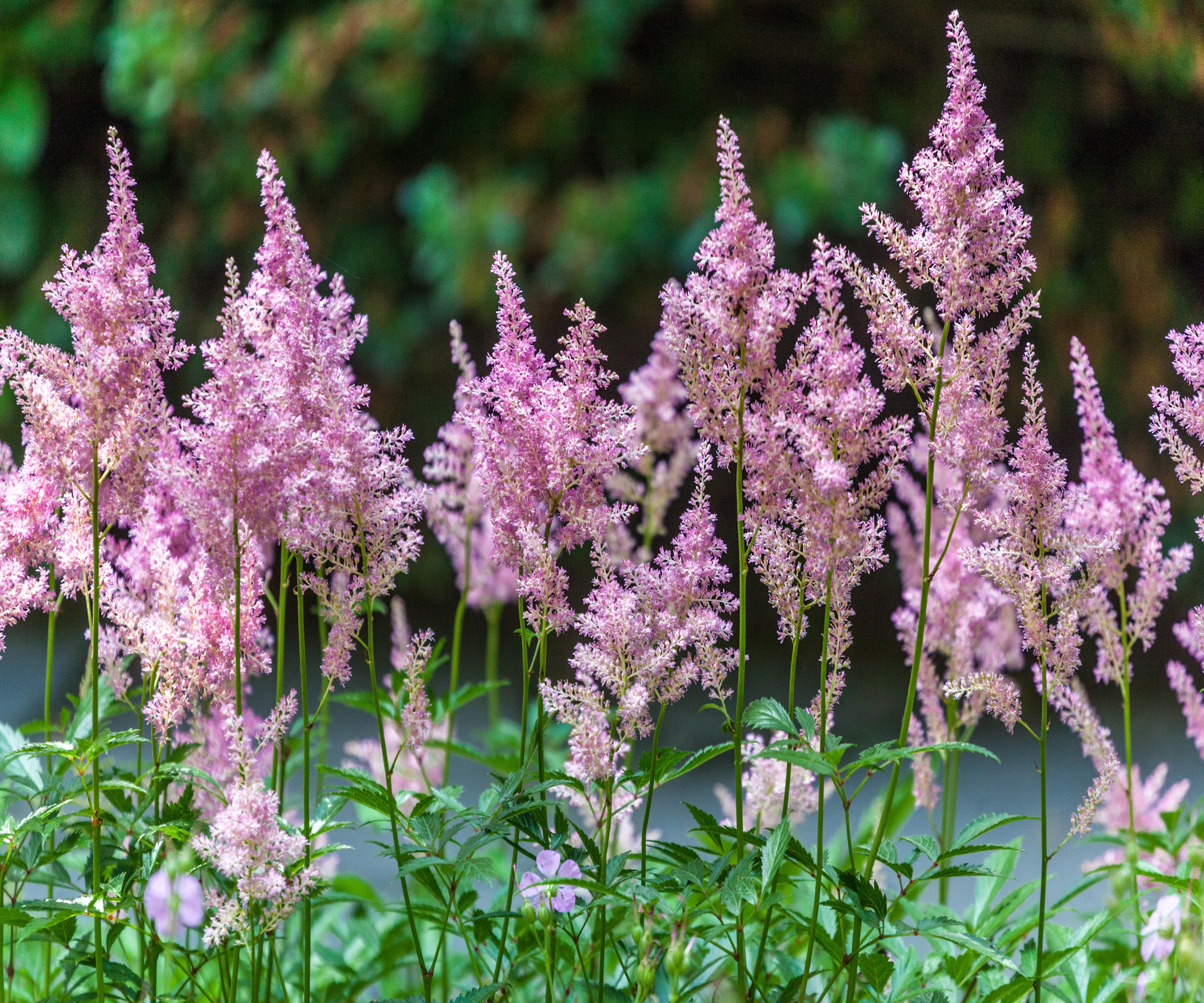
Astilbe are very convenient for adding a jolt of color to gloomy spots. They're full shade perennials and love shade and rich, moist soils. So it isn't much of a surprise that they are miserable during a heatwave.
Astilbes will quite quickly start to wilt, stop all flowering, and start to go brown when temperatures skyrocket. They are happy in temperatures between 59°F to 75°F (15°C to 24°C), but any more, and they start to feel very sorry for themselves.
The main thing you can do to help support your astilbe during extreme heat is maintain the soil temperature. Doing this will relieve the strain on the plant and allow it to continue to produce its beautiful flowers.
The best way to maintain the soil health and temperature for your astilbe is by mulching. Mulch acts as an insulating layer, keeping the soil cooler in hot weather and warmer during cooler nights. 'A 2-3 inch layer of mulch (wood chips, straw, or compost) helps insulate roots and reduce evaporation,' notes Robin.
5. Heuchera
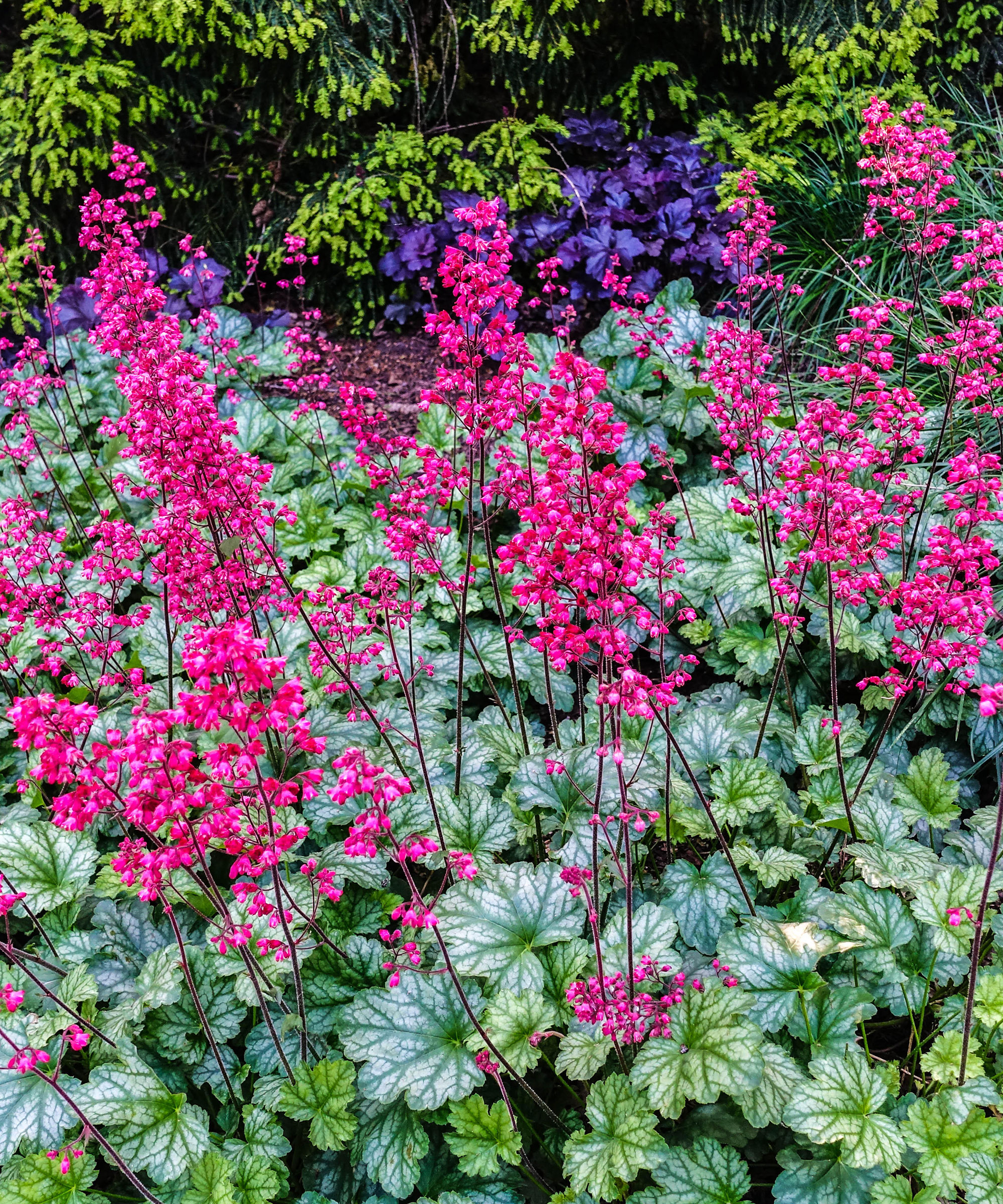
If, like me, you adore heuchera and have them dotted around in containers, then you will already know how temperamental they can be. But like any diva, it shines brightest when given ample care and attention, so during a heatwave, you mustn't leave it to its own devices.
Whilst there are several heuchera varieties, with varying levels of heat tolerance, on the whole, heuchera plants and heat stress are not a good mix. Most heucheras perform best in cooler, shade conditions, and they really can't hold their own against the humid, hot days experienced in a heatwave.
Anything getting close to 90°F (32°C) will cause your heuchera to struggle immensely. You may notice extreme leaf discoloration, rather dramatic wilting and and a total pause on all growing.
Heucheras have particularly sensitive roots. 'Keep soil consistently moist but not soggy,' advises Robin. 'Water consistently and mist lightly in the morning to raise humidity. You can use a shade cloth, patio umbrellas, or even old bedsheets to protect heucheras from peak sun.'
6. Aquilegia
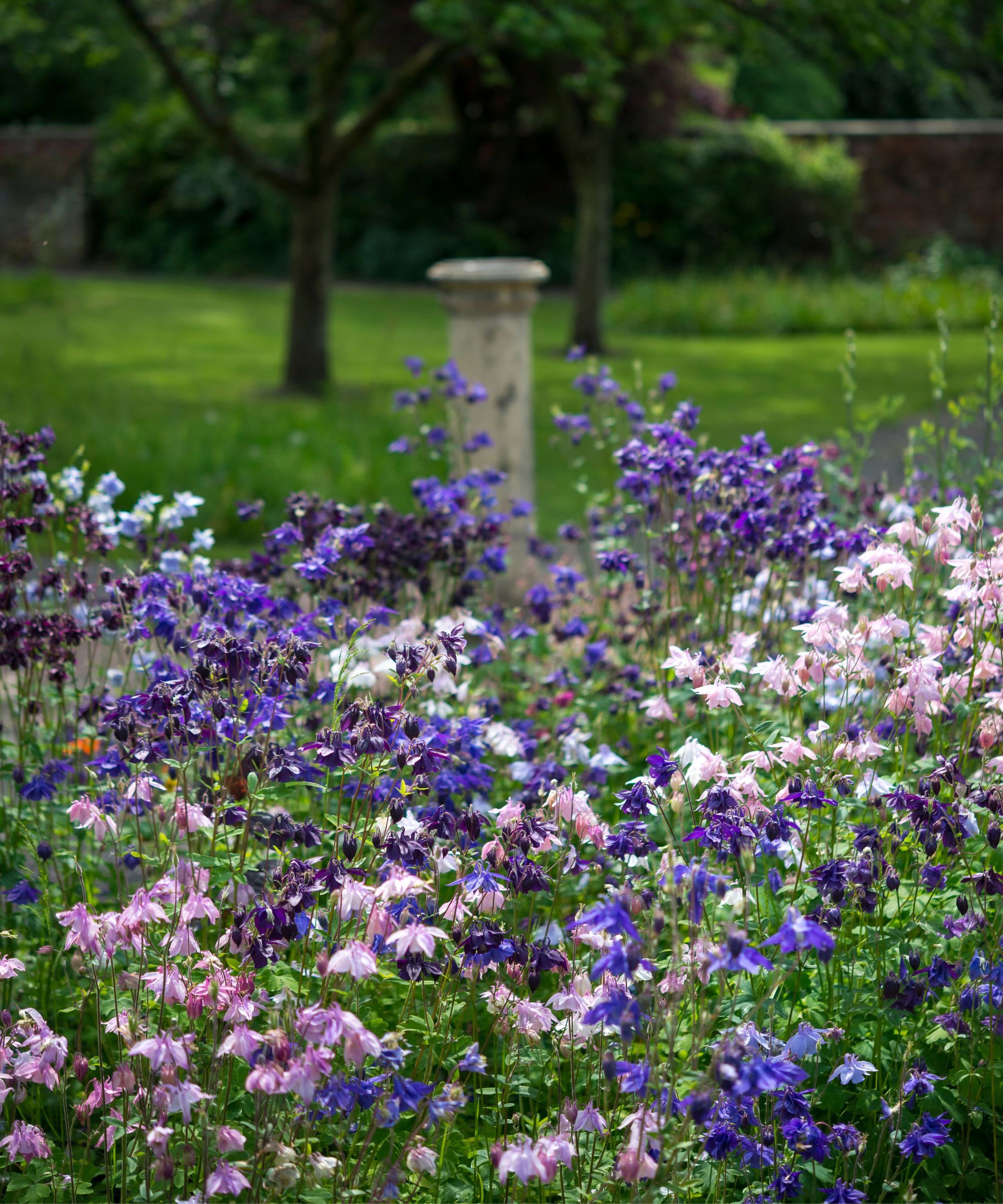

Kate Russell helps others make the most of a landscape by incorporating delicious, attractive edible plants. She is the author of 'Stop Wasting Your Yard!', available at Amazon.
A classic part of traditional English cottage gardens, if you find yourself looking for cottage garden ideas, the bobbing heads of aquilegia flowers always look beautiful.
Aquilegia loves full sun, so you'd be excused for thinking these dainty flowers can weather heat waves without much issue. However, they are not tolerant of extreme conditions, especially those that are very hot and very dry. They are happy in temperatures around 60°F to 75°F (15°C to 24°C), and as the sun intensifies, they begin to decline rapidly.
The key to abundant aquilegia flowers lies in cutting back all the foliage in summer, which encourages a new clump to form. However, if temperatures are climbing and your area is hurtling towards a heatwave, it is best to avoid pruning altogether. Heat-stressed plants need all their energy, so hold off on cutting back until the temperatures are more comfortable.
'Besides watering, gardeners should hold off on fertilizing their aquilegias during a heatwave,' explains plant and vegetable expert Kate Russell. 'Plants need to focus on caring for what they already have. Asking them to produce new growth may be more than they can handle.'
Shop heatwave essentials
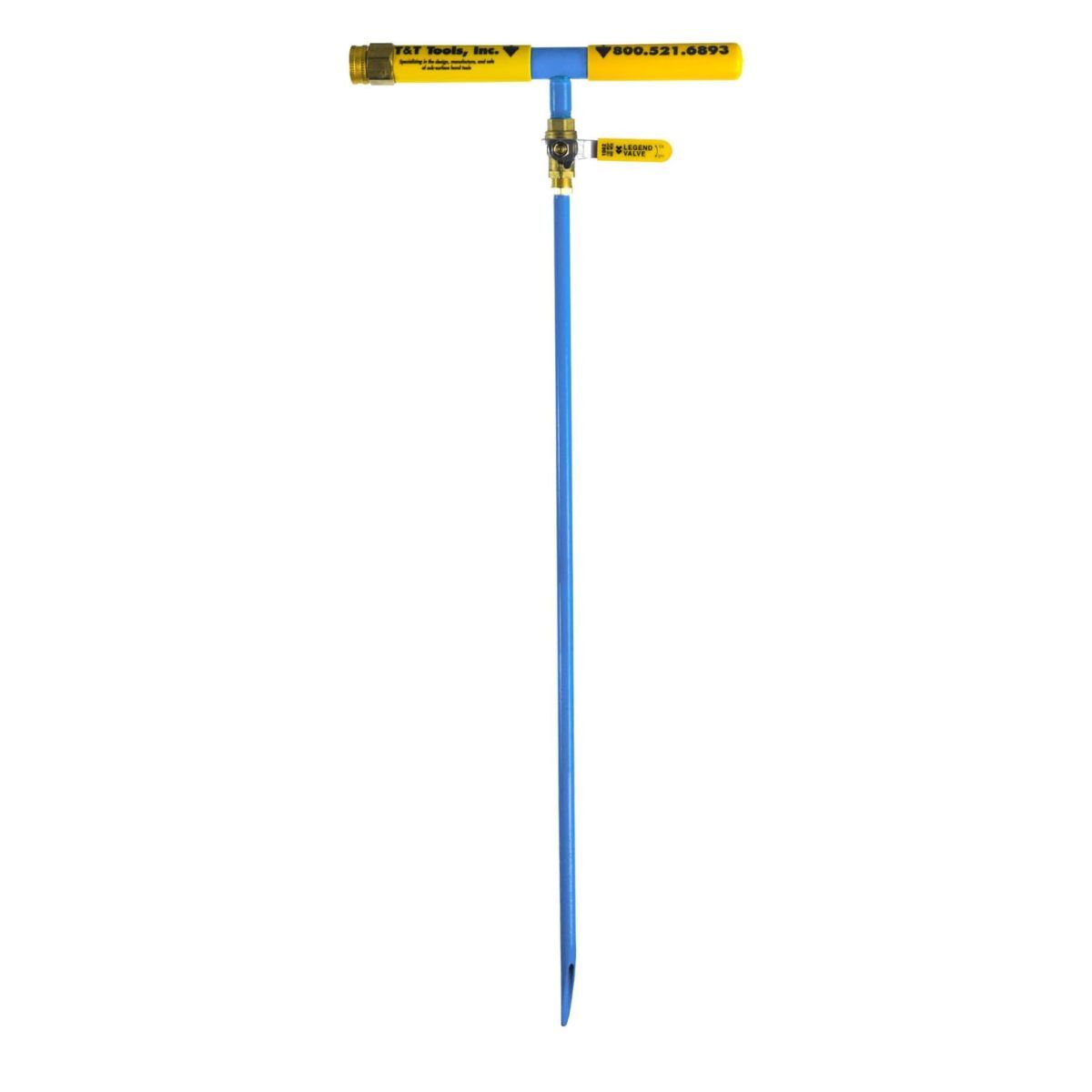
Possibly one of the best investments you can make in your garden if you have hot summer days. This 48-inch water probe ensures deep root watering, which is extremely hard to achieve in a heatwave. It will keep even the thirstiest of plants fully quenched, even in scorching weather.
The memo is clear: keep your eyes peeled for signs your plants are suffering from heat stress, and ensure you know how to water plants during a heatwave (and an occasional shower from a watering can simply won't do). Invest in shade cloths if budget allows, and hold back on any pruning, fertilizing, or relocating any flowers, as tempting as that may be.
As Robin says, 'During a heatwave, focus on keeping your garden hydrated, shaded, and stress-free. A little extra care can help your favorite flowers bounce back strong when cooler weather returns.'
Sophia Pouget de St Victor is the UK Content Editor at Homes & Gardens, bringing readers the latest trends, expert insights, and timeless design inspiration tailored to a UK audience. With a background in luxury interiors and a qualification in Garden Design from London, she has a passion for creating spaces with character and emotional depth. Sophia gravitates toward interiors that defy definition, valuing individuality and effortless elegance. She lives in West London with her partner, two mischievous terriers, and a plump cat named Lettuce.
You must confirm your public display name before commenting
Please logout and then login again, you will then be prompted to enter your display name.

